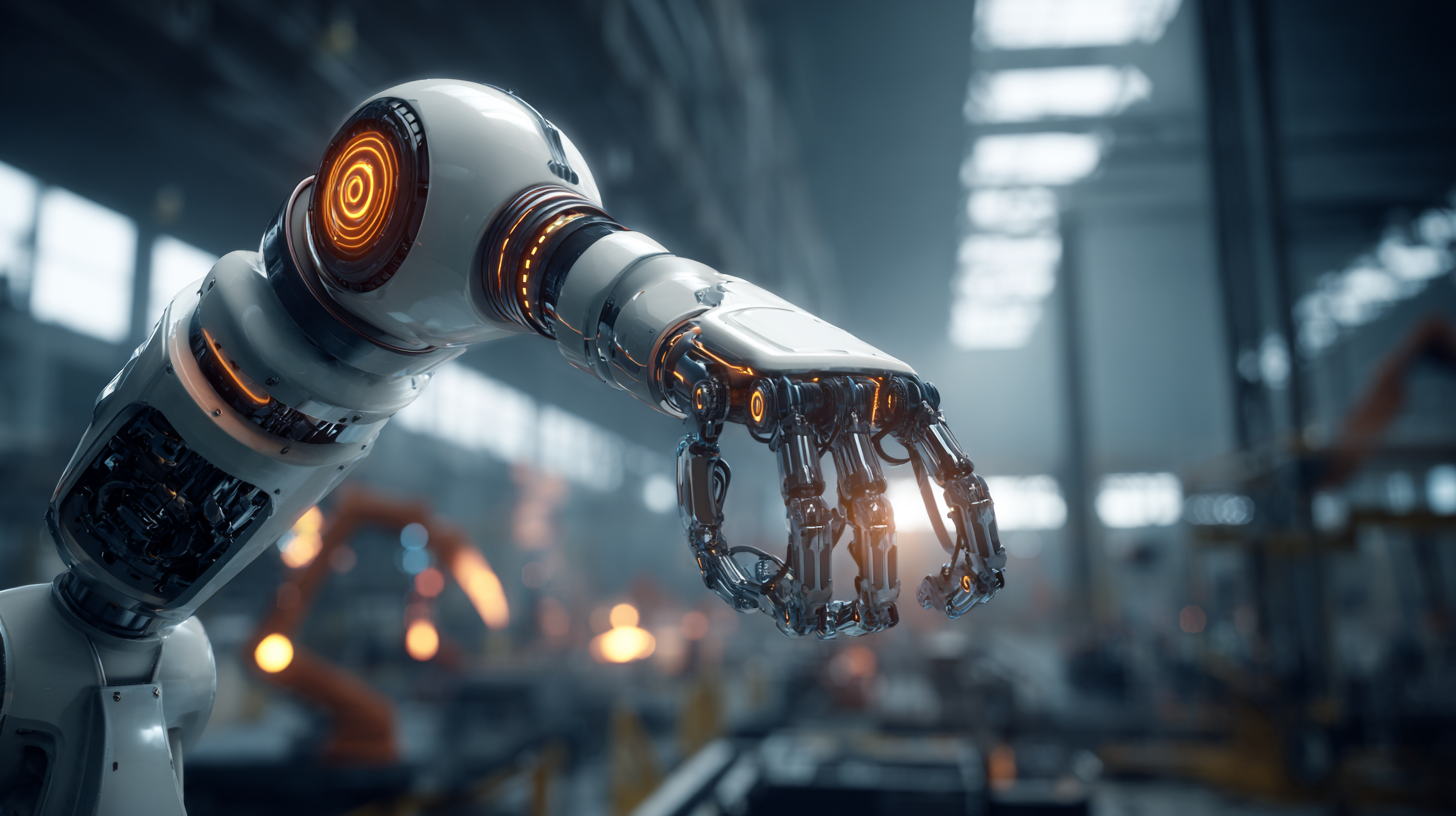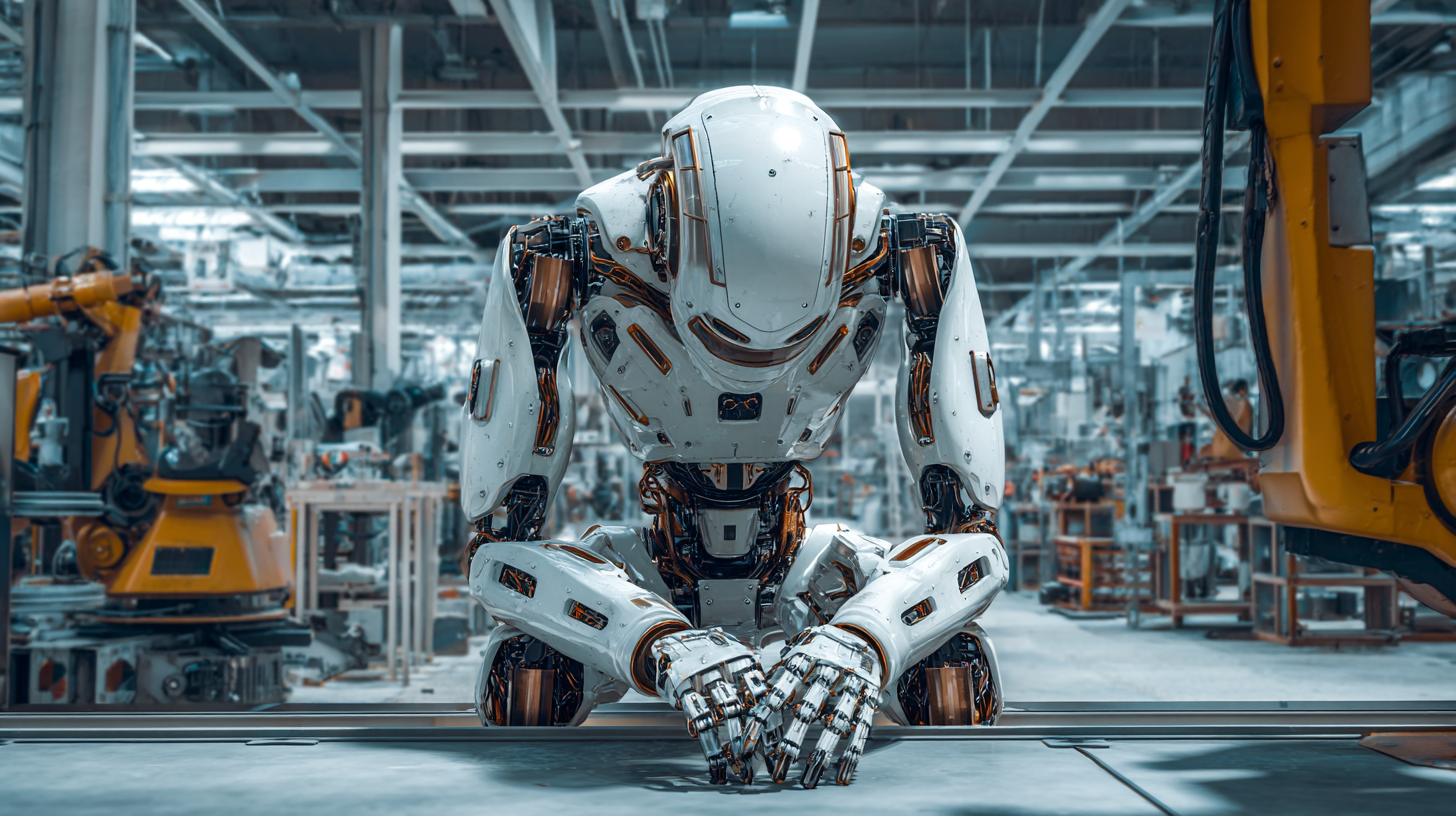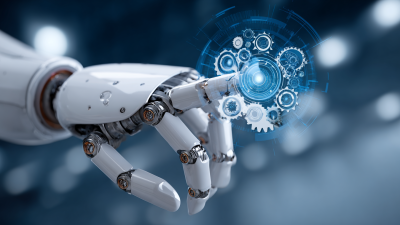Exploring the Future of Manufacturing with Robot Industrial Innovations
The rapid evolution of technology has prompted a significant transformation in the manufacturing sector, particularly through the advent of robot industrial innovations. According to a report by the International Federation of Robotics, global sales of industrial robots reached a record high of 422,000 units in 2018, marking an increase of 6% from the previous year. This trend is expected to continue, with projections estimating that by 2025, the market for industrial robots will surpass $70 billion.

As manufacturers seek to enhance efficiency and reduce operational costs, the integration of advanced robotic systems is becoming imperative. These innovations not only streamline production processes but also minimize human error, leading to higher quality products. In this exploration of the future of manufacturing, we will delve into the various applications of robot industrial technologies and how they are reshaping the landscape of the industry.
Understanding the Role of Robotics in Modern Manufacturing Processes
The integration of robotics in modern manufacturing is transforming traditional processes by enhancing productivity and precision. With advancements in machine vision technology, robots are equipped with the ability to perceive and interpret real-time visual data, enabling them to perform complex tasks with remarkable accuracy. This capability is crucial for ensuring quality control and operational efficiency within manufacturing environments. The role of machine vision extends beyond just automation; it also facilitates smart decision-making by providing critical insights from visual data.
Moreover, the convergence of artificial intelligence (AI) and robotics is driving significant changes across industries. AI-powered robots can adapt to various manufacturing challenges, streamline workflows, and optimize production processes. As technology evolves, the accessibility and affordability of advanced robotic solutions are becoming attainable even for small-to-mid-sized manufacturers. This shift allows a broader range of businesses to leverage robotic innovations, ensuring they remain competitive in an increasingly digital landscape while enhancing overall efficiency and reducing operational costs.
Integrating AI and Machine Learning into Robotic Systems for Efficiency
The integration of AI and machine learning into robotic systems is revolutionizing the manufacturing landscape. As industries seek to enhance productivity and optimize operational efficiency, these advanced technologies enable robots to learn from their environments, adapt to changing scenarios, and perform complex tasks with greater precision. By analyzing vast amounts of data, AI algorithms can predict maintenance needs, streamline workflows, and improve quality control processes, thereby reducing downtime and minimizing waste.
Moreover, machine learning empowers robots to enhance their decision-making capabilities. With continuous learning from previous experiences and real-time data, robotic systems can adjust their operations to achieve better outcomes. This adaptability not only speeds up production cycles but also allows for customization in manufacturing, catering to the specific needs of consumers. As companies increasingly adopt these innovations, the future of manufacturing looks poised for a significant transformation, characterized by smarter, more efficient production methods driven by intelligent robotic systems.
Exploring the Future of Manufacturing with Robot Industrial Innovations - Integrating AI and Machine Learning into Robotic Systems for Efficiency
| Parameter | Current Value | Predicted Value in 5 Years | Impact of AI & ML |
|---|---|---|---|
| Production Efficiency (%) | 75 | 90 | Increased automation and optimized workflows |
| Downtime (% of total time) | 10 | 3 | Predictive maintenance powered by AI |
| Labor Cost Savings (%) | 25 | 45 | Enhanced robot capabilities, reducing manual labor |
| Error Rate (%) | 5 | 1 | AI-driven quality control systems |
| Production Speed (units/hour) | 200 | 350 | Adaptive learning increases throughput |
Case Studies: Successful Implementation of Robotics in Manufacturing
The integration of robotics into manufacturing has reshaped the landscape of the industry, with numerous case studies exemplifying successful implementations. According to a recent report by the International Federation of Robotics (IFR), the robotics market in manufacturing is expected to exceed $70 billion by 2025, highlighting a significant shift towards automation. One good example of this is the automotive sector, where companies like Ford have leveraged robotic technology to streamline assembly lines. Ford's use of collaborative robots, or cobots, has enhanced productivity by 25%, allowing human workers to focus on more complex tasks while robots handle repetitive ones.
Another notable case is that of Siemens, which implemented advanced robotics in their electronics manufacturing facilities. By introducing robotic arms equipped with artificial intelligence, Siemens reported a 30% reduction in production time and a notable increase in product quality. The success of these implementations is supported by a study from McKinsey, which states that automation technologies could raise global productivity by 0.8 to 1.4 percent annually. These real-world applications showcase how robotics not only boost efficiency but also elevate the overall standard of manufacturing, paving the way for innovation and growth in the industry.
Future Trends: Innovations Shaping the Next Generation of Industrial Robotics
The future of manufacturing is significantly influenced by innovations in industrial robotics, with a strong emphasis on the current trends shaping the industry. In 2023, China's production scale of industrial robots reached 429,500 units, capturing a remarkable 51% of the global market share. The total sales revenue in the sector hit approximately 72.54 billion yuan, illustrating the country's rapid advancement in robotics technology. This growth not only highlights China's dominance in the industry but also signals a shift towards a more automated manufacturing process, which is likely to continue in the coming years.

As we look ahead, the upcoming 2025 World Robot Conference in Beijing will place a spotlight on humanoid robots, showcasing innovative developments and practical applications within various industries. With an increase in demand for automation, companies are racing to fulfill orders, further driving technological enhancements. The integration of artificial intelligence into manufacturing processes is also gaining momentum, aiming to create a seamless fusion between economic activity and technological advancement.
These trends are pivotal as they not only shape the future landscape of industrial robotics but also pave the way for enhanced efficiency and productivity across the entire manufacturing sector.
Challenges and Solutions in Adopting Robotics for Manufacturing Enterprises
The adoption of robotics in manufacturing presents both challenges and innovative solutions that can significantly impact the industry. One of the primary challenges is the high initial investment required for robotic systems. Many manufacturing enterprises, especially small to medium-sized businesses, struggle to allocate sufficient resources for the acquisition and integration of advanced robotic technologies. To address this issue, many companies are turning to leasing models or co-investment partnerships that allow them to access cutting-edge robotics without the heavy financial burden.
Another significant challenge is the potential skill gap that arises from integrating robotics into manufacturing processes. The shift towards automation often necessitates a workforce skilled in programming and maintaining robotic systems. To combat this, manufacturing enterprises must invest in training programs that upskill their employees, ensuring a smooth transition into a more automated future. Collaborations with educational institutions can also be a beneficial approach, helping to create a talent pipeline equipped with the necessary skills to thrive in an increasingly robotic landscape. These proactive measures not only mitigate challenges but also position manufacturing enterprises to harness the full potential of industrial innovations.


